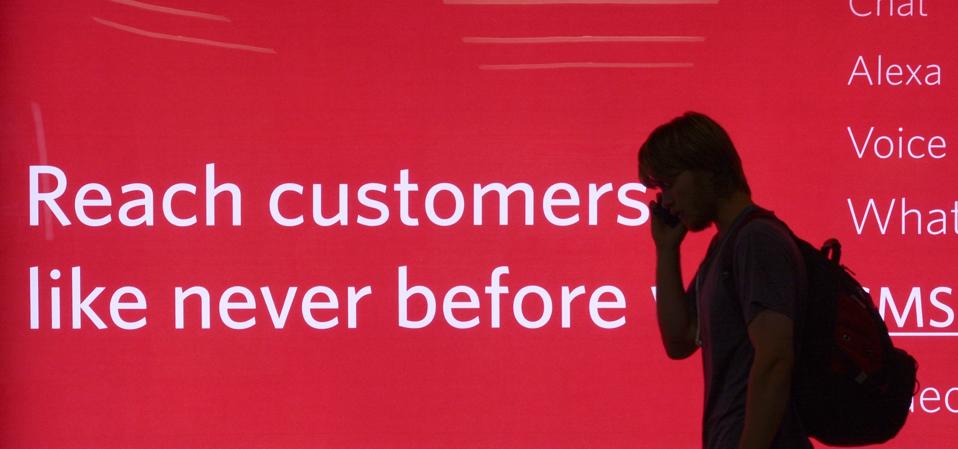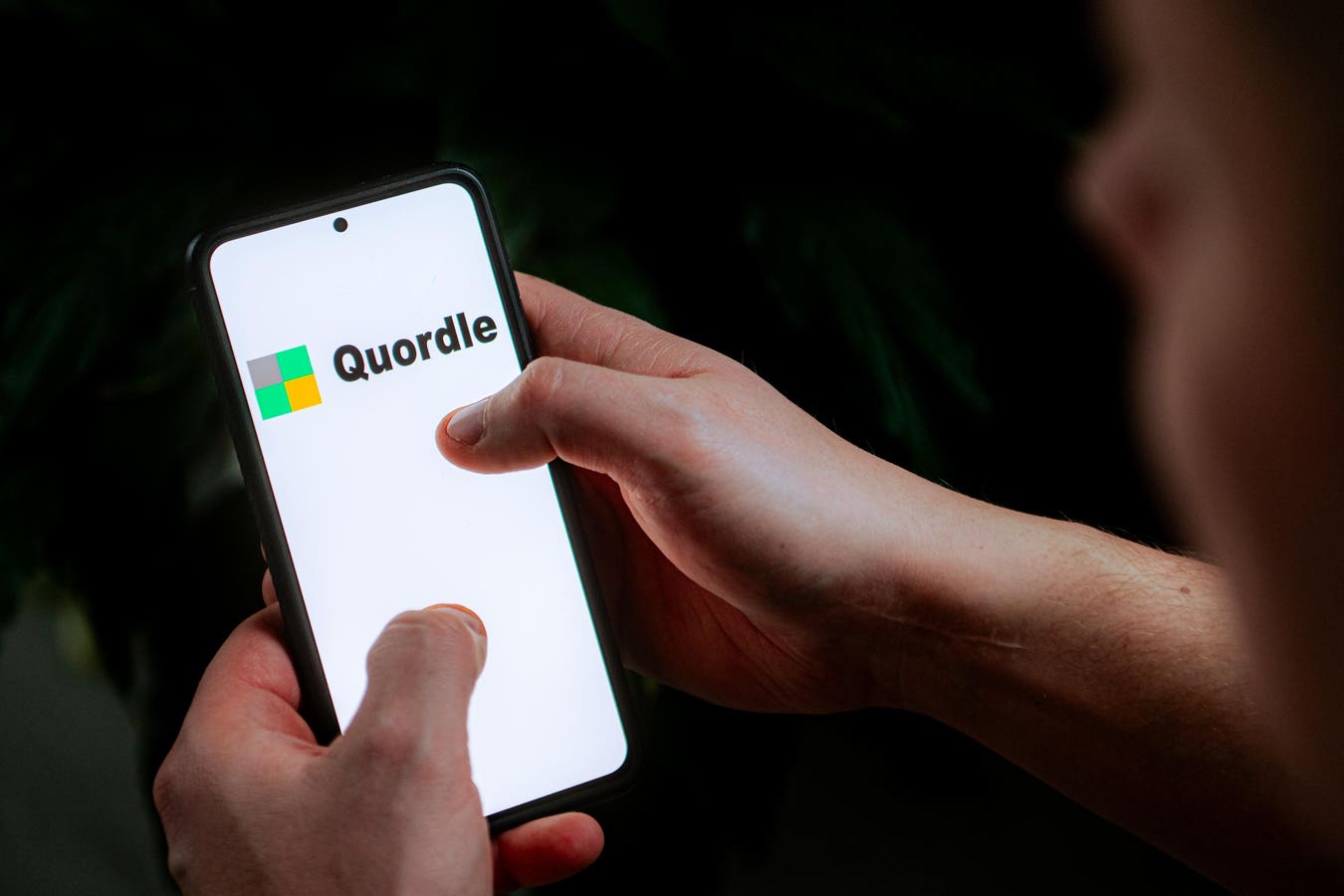SAN FRANCISCO, CALIFORNIA – SEPTEMBER 17, 2018: A passenger waiting to board his plane walks in … More
We studied that traffic from ChatGPT-style experiences converts up to 9x better than traditional search. Why? Because LLMs behave more like trusted advisors than search engines. This shift is already transforming how consumers discover and buy — and if your brand isn’t showing up in these conversations, you’re invisible. In this article, I’ll break down what Answer Engine Optimization (AEO) means, how brands can train LLMs to recognize them.
Answer Engine Optimization – What Does This Mean for Brands?
Answer Engine Optimization is the practice of structuring content so that large language models (LLMs) like ChatGPT can understand, reference, and recommend your brand in response to user questions. To get picked up by an LLM, you need to understand how these models learn from content. LLMs get trained to complete sentences. Like: “Life is like a box of chocolate”. During training the machine would just mask a word at random and then try to predict it. To show up in an LLM’s response, your content needs to become part of the training data of LLM.
Here are a few tips for businesses:
Q&A Format: Train The Model With Conversations
You can’t just dump your product catalog into the web and hope LLMs use it. It will scrape it, but it won’t use it. Marketing copy won’t cut it. LLMs learn through natural dialogue — not taglines.
Brands need to shift from static, keyword-based content to dynamic, conversational material. Think less like a brochure, and more like a smart rep answering real customer questions. This is where SEO breaks down — it was built around isolated keywords. LLMs require context.
Helpful And Authentic: Surprise The Model
LLMs skip over what they already know. If your content says “The earth is round,” it won’t register — the model already has that data.
You need to find in your data something that new or less known about your brand, product, or category. The most valuable content is the stuff the model hasn’t seen yet — helpful, real, and grounded in authentic conversation.
Authoritative: Be A Source Worth Citing
Some things don’t change. Just like in the SEO world, credibility still matters. High-quality content that gets linked, quoted, and validated across sources builds authority. Spam doesn’t work. If your brand voice isn’t trusted — or doesn’t exist — LLMs won’t echo it.
The Monitoring Mirage Of Answer Engine Optimization
Every time a new tech trend takes off — AEO is one — Silicon Valley races to build tools around it. AEO is no exception. The latest wave includes dashboards designed to track your brand’s presence across ChatGPT, Perplexity, and other platforms. A few examples are Profound, Daydream and Goodie. All Track brand mentions across AI platforms.
But here’s the problem: LLMs don’t behave like search engines. They remember. This was not the case in the search era. Google, for example, did not remember your searches. When I worked on Google Health, this was a common complaint from doctors: Google would always return the same results, even if you had already clicked those links before. Every new session was a reset. There was no context.
That’s no longer true. Ask ChatGPT what it knows about you — you’ll see. These models build context. They recall prior interactions. And that memory shapes future recommendations. That however means that monitoring any LLM answers miss the point. As the LLMs memory evolves, and so do the outputs. To fully understand how your brand is being represented, you’d have to know the personalized memory of every single user — an impossible task for any dashboard.
Best Measurement Of LLM Traffic
So what’s the smarter approach? You want to know the traffic. Just watch your traffic. Look at what’s actually coming in from ChatGPT, Gemini, or Perplexity. It’s cheaper, more reliable — and shows you what really matters.
How To Create LLM-Friendly Content
Measurements are just half the rent. To impact the LLMs trainings data, you need new brand content. The old SEO playbook does not work anymore. Your brand has unique knowledge. It has a vision. Don’t hide it behind generic product listings.
Let’s say someone searches for a “retirement watch.” Don’t just list five SKUs. Explain what makes a great retirement watch. Legacy? Legibility? Sentimental value? Engage the customer into an authentic conversation. That’s the kind of context LLMs are trained to pick up.
In short: show the real conversations you’re already having. Look at your site search queries, your sales team scripts, your support chats. That’s gold. LLMs thrive on the kind of content that sounds like a helpful human.
Here’s how to approach it:
Understand User Intent & Frame Questions
- Build content around real questions people ask.
- Provide short, clear answers upfront.
Focus On Meaningful Content
- Don’t just say “it’s a watch.” Explain why it matters.
- Tell the story — that’s what sticks.
Optimize For Voice & Conversation
- Use natural phrasing that fits your brand.
- Focus on “who,” “what,” “where,” “when,” “why,” and “how.”
Some brands already have this content out in the open — in community forums, Reddit threads, or customer discussions. They’ll naturally surface in LLM results.
Others have great content buried in customer service logs or internal tools. That needs to come out. Structure it. Publish it. Make it discoverable. Many tools can help you here: Google’s Vertex, Meta’s LLama, or fine-tuned industry specific approaches like r2decide, a company I am involved with.
What’s Next After Answer Engine Optimization?
AEO is just the beginning. Two even bigger shifts are on the horizon — and both will deeply impact how brands show up in the age of AI.
Paid Discovery Will Change
LLMs will soon integrate advertising directly into their answers. Google, Perplexity, and OpenAI have all confirmed this. When exactly? Probably by early 2025 — if not sooner.
But don’t expect just ads or sponsored results. These models will deliver recommendations, at the end you pay for the service of ChatGPT, thus the dynamic is changing. To do that, new supply-side bidding platforms will emerge — ones that can feed LLMs with conversational ad snippets tailored to the user’s prompt.
The focus won’t be on “selling,” but on helping. That means brands will need their own brand-side LLM — a layer that can speak for the company inside these conversations and provide the right product at the right moment.
Agents Everywhere Via Model Context Protocols
The next wave is even bigger: agents that manage full transactions inside the LLM interface.
OpenAI has already introduced Model Context Protocols (MCPs) — a new layer that allows ChatGPT to do more than chat. It can check stock, answer personalized questions, even schedule deliveries. Sam Altman has said the goal is to create personal AI companions that can act — not just inform.
For brands, that means building an agent layer of your own — a system that can plug into these conversations, respond with tailored info, and complete the customer journey without sending the user back to your website.
Brands Need Their Own Discovery layer
To stay relevant, brands need their own discovery layer: content that speaks the language of LLMs — conversational, helpful, and ready to be recommended.
This isn’t theory. The shift is already underway. If you want to dive deeper, ping me on LinkedIn.









